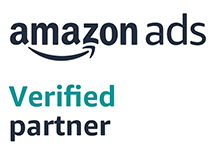The marketing success of an ecommerce brand heavily relies on decisions driven by data. The capacity to collect and evaluate the key performance-driving marketing metrics decides the profitability of your business.
What are D2C marketing metrics?
D2C marketing metrics are those KPIs that help your ecommerce business make informed decisions for resource allocation and performance improvement. Some key use cases of these metrics include measuring return on investment, analyzing customer preferences, and benchmarking performance against competitors.
Not all marketing metrics enable these use cases or make performance easier. Those metrics that don't have an substantial impact are called vanity metrics, such as page views, unqualified leads, or social media likes.
identifying the most impactful metrics for your ecommerce business is the what you should concentrate on.
In this blog, we will walk you through the key D2C marketing metrics for maximum eCommerce profitability in 2023.
Organic traffic
Visitors that arrive at your website as a result of unpaid search results are classified as organic traffic. Organic traffic is free and originates from a link on a search engine's results page instead of a paid advertisement. The advantage of this form of traffic is that it comes from non-paid sources.
In order to increase this type of traffic you must keep your social-media post content engaging, Collect user-generated content and solicit testimonials from your customers, Create a faithful following on social media, and have a presence on different platforms such as Amazon, Nykaa, Myntra, etc.
Calculating organic traffic does not require complex calculations as Google's analytics tools can give you the precise figures.
The ideal range of this metric should be between 10-20%
Cost per session
The Per Session Value (PSV) is an indicator within the Ecommerce section of Google Analytics. It demonstrates the average revenue created in each session. The Cost per Session metric helps us to evaluate the efficiency of our promotional activities by contrasting our Total Ad Spend with the number of User Sessions created. A session is an accumulation of user behavior within a defined period and users may have numerous sessions in one day.
You can reduce your cost per session and boost the Click-Through Rate (CTR) by utilizing high-definition, eye-catching product pictures. It is important to effectively convey the Unique Selling Points of the product to get more clicks. You can also run Performance Max Ads to get purposeful clicks at a lower cost. Additionally, you can run mid-funnel campaigns such as Discovery Ads on Google and View Content Ads on Meta.
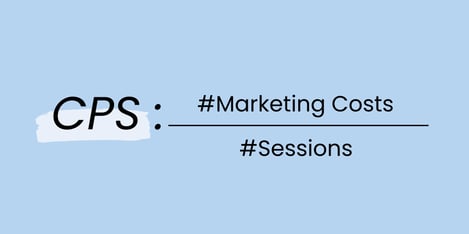
The ideal CPS of this metric should be between 5-10 INR
Add to cart
The add-to-cart rate is the proportion of visitors who put at least one item in their basket when they are browsing your eCommerce website. It is essential to keep track of this metric since it gives you a clear indication of various aspects. It can reveal if your choice of products is successful, if your website is user-friendly, and if your promotional campaigns are successful
To boost the number of users who click Add to Cart, it is important to display the price and a call-to-action (CTA) button that says "Shop Now" to target customers who have both the intention and the means to purchase. Additionally, it is advisable to advertise items that come in various sizes and to provide a thorough and precise product description along with clear and high-quality images on the website.
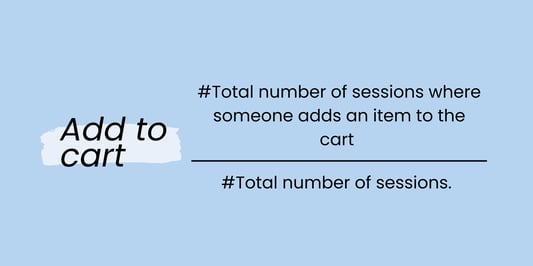
The ideal range of this metric should be between 10 -15%.
Cart to purchase or Transaction
Cart conversion rate refers to the proportion of customers who make a purchase after adding items to their shopping cart. It reflects how successful your checkout process is in terms of finalizing the sale. This rate is vital as it assists in gauging the effectiveness of the checkout process.
Minimizing the number of people who abandon their online shopping carts on your website can help to amplify the number of completed purchases. Take a look at the checkout page to see if there are any extra charges for cash-on-delivery and if the shipping charges are made visible. Moreover, make sure that the cash-on-delivery option is available.
The ideal range of this metric should be between 15 - 20%
Average order value
AOV is an essential ecommerce measurement that stores focus on. It provides them with valuable information about their customers, going beyond just the acquisition of them. Despite this, some merchants are overly concerned with acquiring customers, without paying enough attention to the critical importance of a good AOV. This D2C metric measures the mean sum of all orders that are placed with a retailer in a certain period. It has an immense influence on decisions like advertising costs, store design, and product costs you can try bundling items together to boost your average order value
To boost your average order value, you can try bundling items together or utilize segmentation or filtering to encourage customers to purchase higher-priced products.
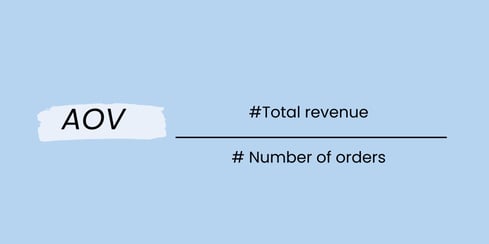
The ideal range of this metric should be >1500
Repeat customers rate
A repeat customer is someone who has made multiple purchases on your website. The time period between the purchases does not have to be within a certain timeline - for example, a customer who made a purchase a year ago and then bought something recently is still regarded as a repeat customer.
This is a metric that is often used by online vendors and is generally expressed as a percentage. It is a beneficial indicator to assess the customer experience and determine the value a customer receives from shopping at your store.
You can maximize the number of customers who come back to your business by launching dynamic ads targeted at those who have visited product pages and given up in the middle of their cart checkout. You can also reach out to people who have interacted with your brand before by using email marketing, SMS messages, and WhatsApp messages that add a personal touch.
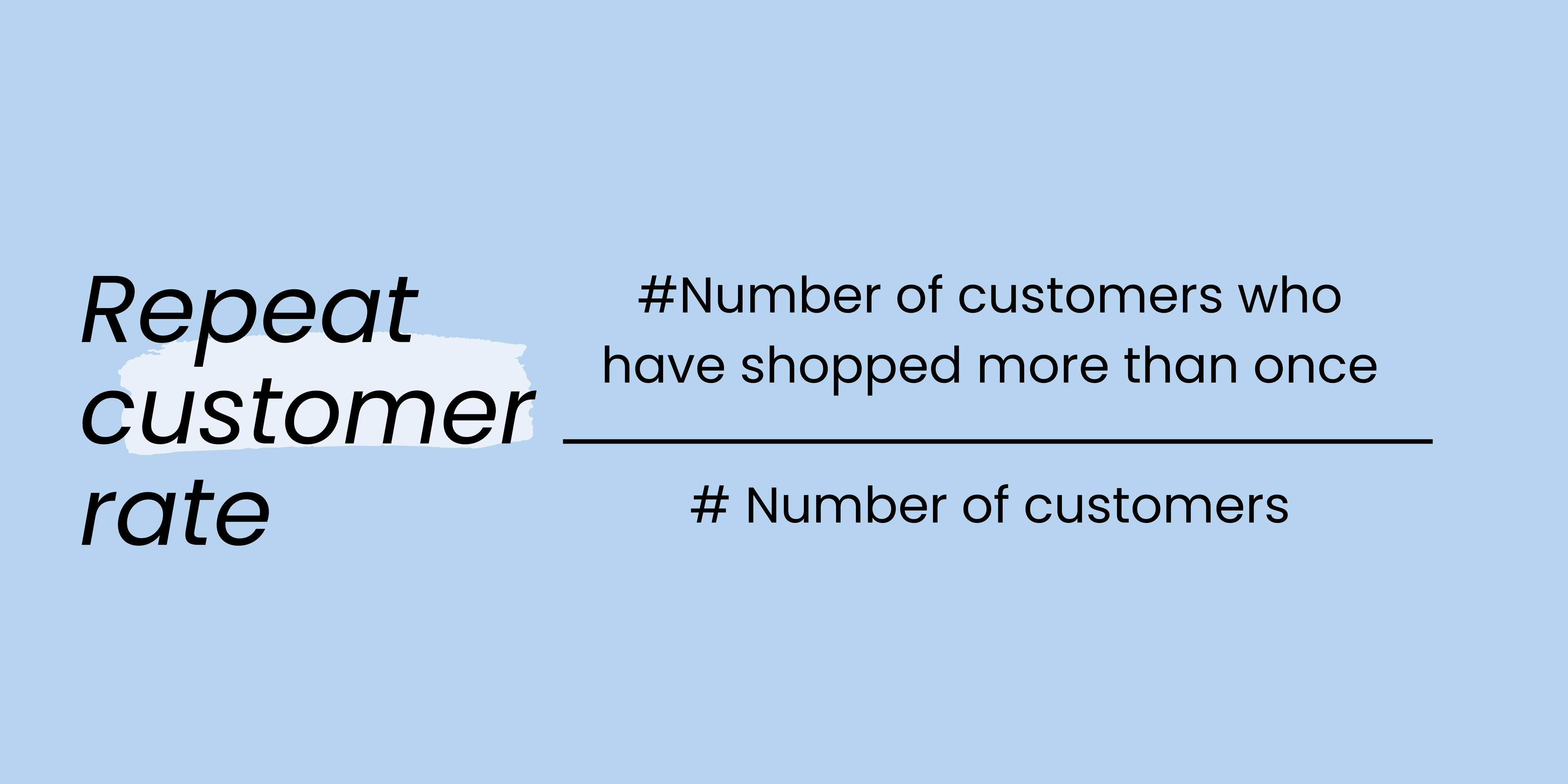
The ideal range of this metric should be >25%
Return to Origin
When an order is not able to be fulfilled or it is sent back by the customer, it is classified as a Return to Origin (RTO). In other words, RTO is when the order cannot be delivered and has to be sent back to the source. It is essential to have control over RTOs regardless of the volume or value of orders.
Ecommerce organizations can help limit the effect of returns and exchanges by amending their product descriptions, creating an ideal return procedure, and making sure orders are accurate. They can also motivate purchasers to utilize payment methods other than cash on delivery to lessen the financial effect of returns and exchanges. They should introduce a verification process to confirm that the customer is accessible for delivery.
Customer Acquisition cost
Acquiring a consumer to purchase an item or service is known as the Customer Acquisition Cost (CAC). This cost is usually connected to the client's lifetime value which is a significant monetary element. With CAC, any company can decide how much it costs to get each consumer. The D2C sector also requires relying on the quality of your products, services, or brand to make them stay. Rather than spending money on one-off customers, extending the life of each customer allows your business to grow faster and more cost-effectively.
Decrease your customer acquisition costs by concentrating on suitable demographics, targeting existing customers, enhancing client retention, experimenting with affiliate programs or influencer marketing, and marketing automation for monitoring the entire process.
.jpg?width=573&height=287&name=319312246_745439067098504_35719723247873921_n%20(1).jpg)
Cart abandonment rate
The cart abandonment rate is the proportion of online shopping carts left by customers before finishing the payment process. To measure this statistic, one has to divide the number of completed purchases by the total number of created online carts. Data on cart abandonment can be used to analyze the performance of an e-commerce company, specifically regarding issues with the checkout process.
You can decrease the rate of customers abandoning their carts by giving the option of guest checkout, incorporating tiny pictures of the items throughout the checkout procedure, adding progress markers on the checkout page, being open about all expenses, displaying the total savings at checkout, providing multiple payment options, and making shipping free.
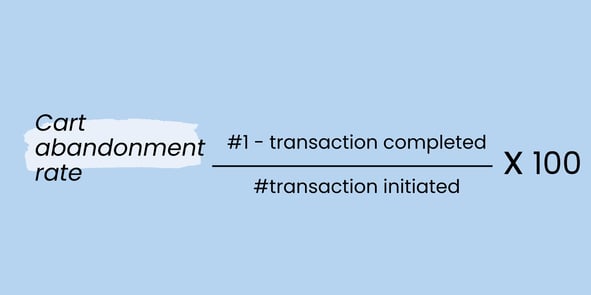
Return on Ad spends
Return On Advertising Spend (ROAS) is an essential digital marketing metric for measuring the success of advertisement campaigns. It enables online businesses to determine which methods are profitable and how to enhance future ad campaigns. ROAS provides insights for budgets, tactics, and overall marketing maneuvers. Ecommerce corporations can best use ROAS to make wise choices on where to allocate their advertising funds and become more efficient. When combined with customer lifetime value, it provides a comprehensive view to make decisions on the advertising budget.
It is possible to increase the return on ad spend (ROAS) by enhancing the mobile-friendliness of your website, using keyword targeting, incorporating geo-targeting, optimizing your landing pages, applying conversion rate optimization techniques, and offering seasonal promotions.
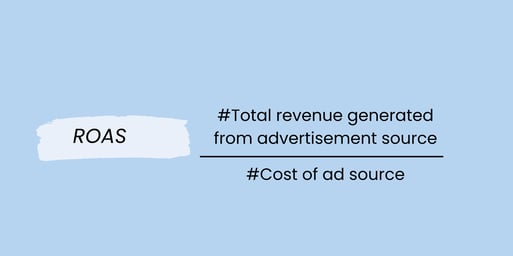
Don't let the excess information overburden you with unwanted stress. Concentrate on important metrics to see fruitful results for your e-commerce business.
Adyogi is a digital advertising platform customized for eCommerce brands. We can help track your key metrics and keep them in check in order to increase your revenue. We automate digital Ad creation to establish an automated prospecting, targeting, and retargeting approach that targets the client's merchandise and cross-promotes using cutting-edge technology, to boost sales.
Get in touch to see how we can help you grow your business online.


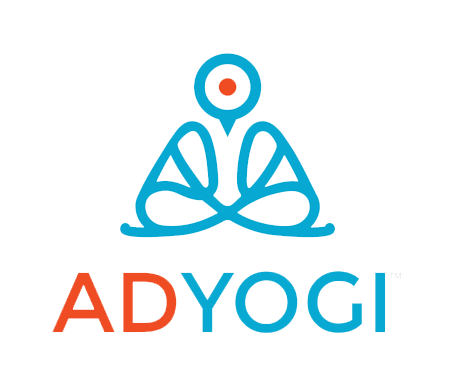


-1.png)

